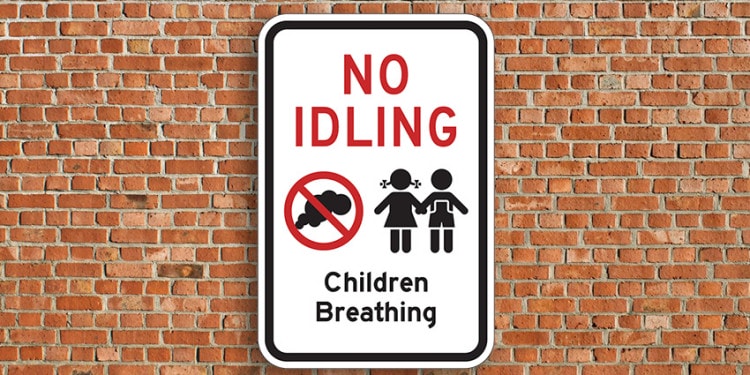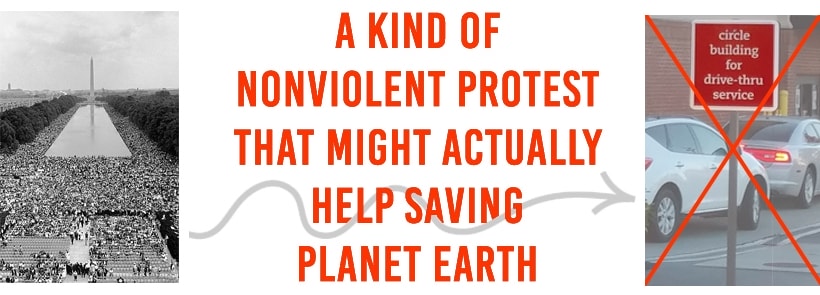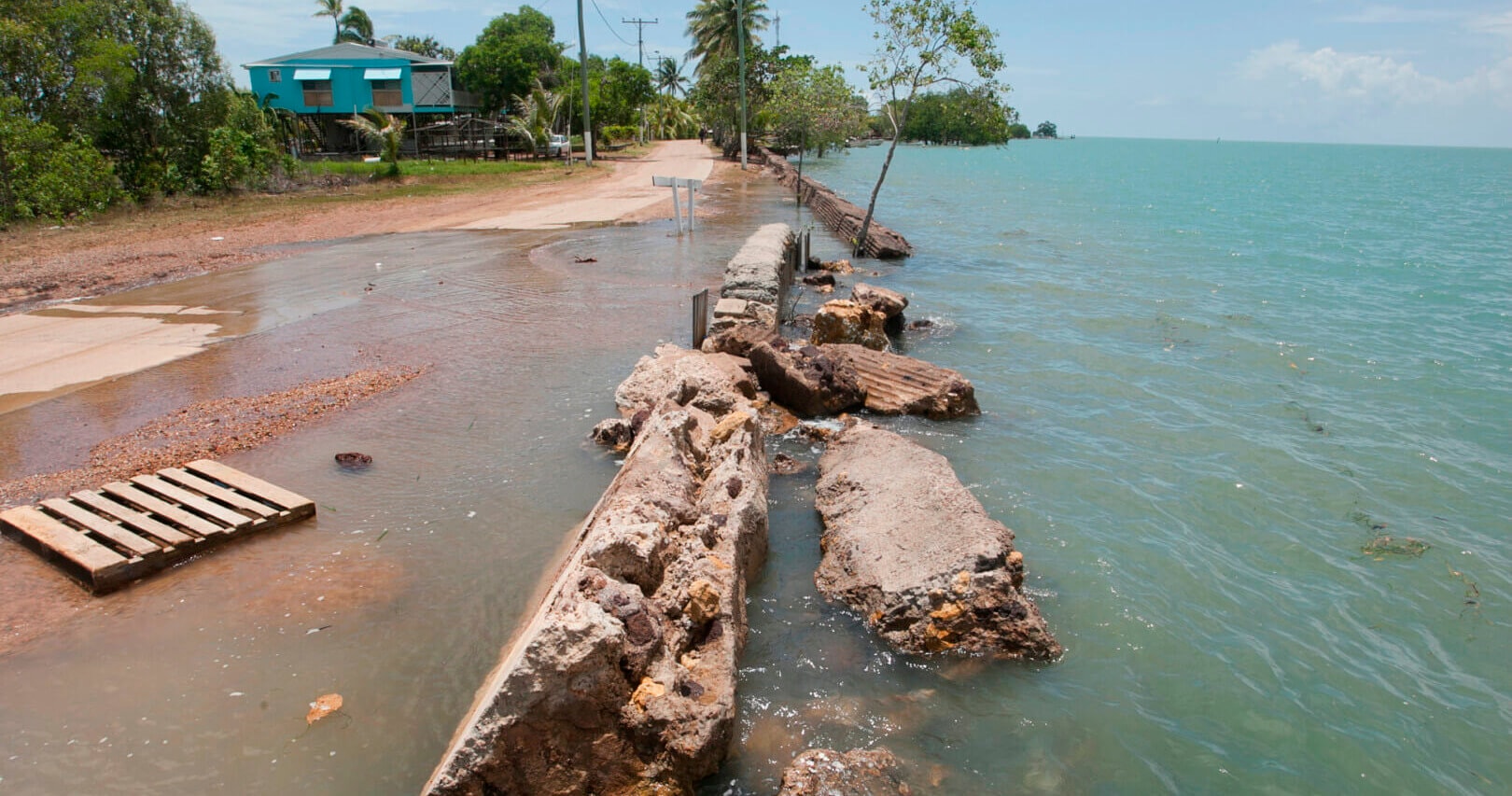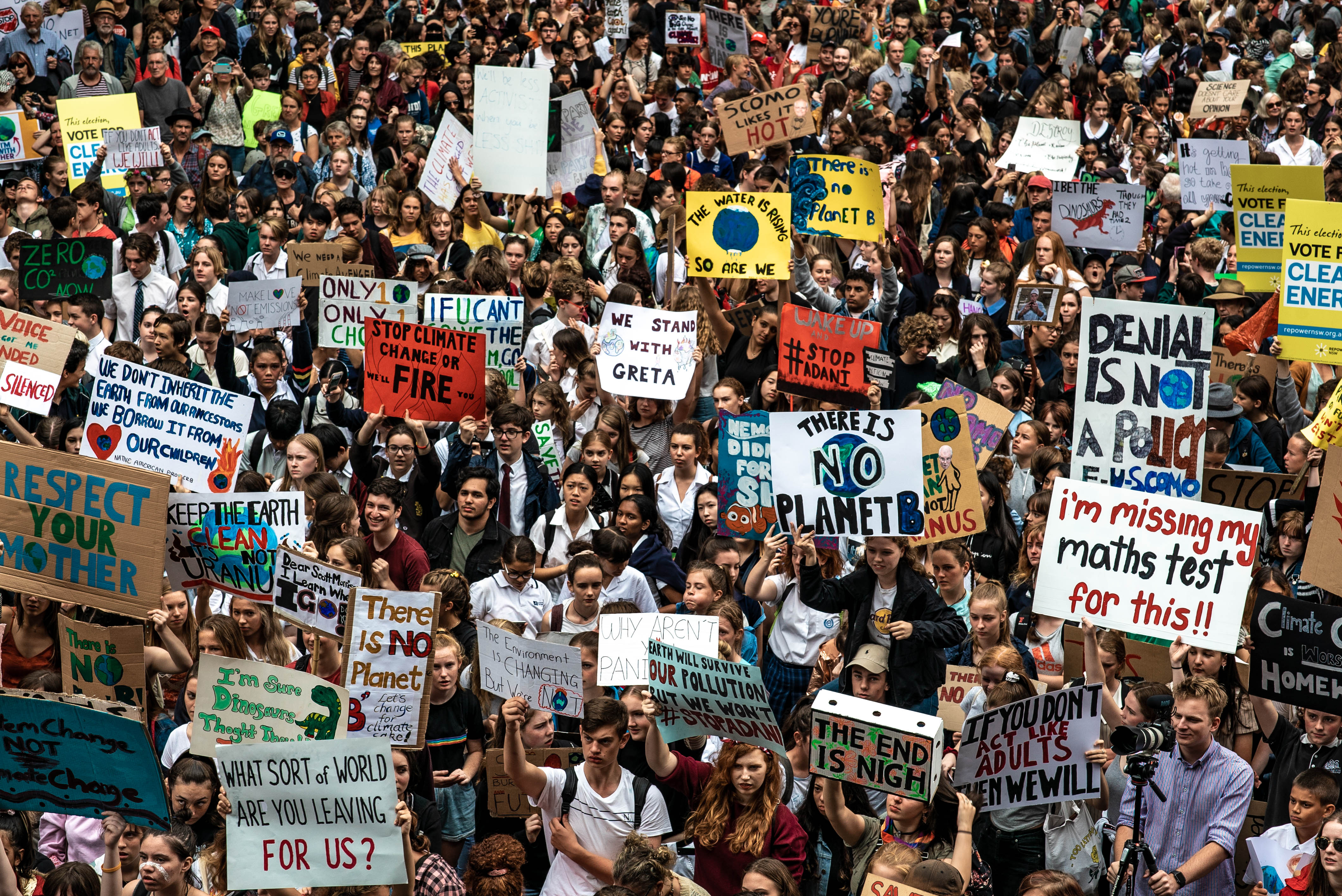Gisela Hausmann, an active environmentalist and award-winning non-fiction author, sent Impakter her proposal to make Earth Day 2020 = No-Idling Day. A nonviolent protest to help cut back on fossil fuel use by shutting down for one day needless idling of car engines. We are pleased to publish her article.
Almost 300 years ago, in 1730, three hundred-sixty-three Bishnoi people of the Indian village of Khejarli died while trying to protect – trees. Not other villagers but – trees.
The maharajah of Jodhpur, Abhay Singh, had sent his soldiers to cut acacia logs in a nearby forest for the construction of a new palace. The Bishnois who believe in protecting trees hugged the acacias in an effort to save them and were slaughtered, but not in vain.
When Abhay Singh heard of this powerful example of nonviolent resistance, he immediately traveled to Khejarli, apologized to the villagers and declared the Bishnoi state as a protected region, forbidding harm to trees and animals.
Pay tribute to #AmritaDevi a brave woman fought against the felling of tress by the Maharaja of Jodhpur in Marwar. pic.twitter.com/T5pLrvYzrK
— India Visit Online (@IndiaVisitOnlin) March 8, 2016
Nonviolent protests: How they changed the status quo in the past
Nonviolent resistance also helped in swaying hundreds of other political leaders’ opinions. From Gandhi’s Salt March to the civil rights marches and the Vietnam War protests, nonviolent protesters succeeded in changing status quos.
In his “Letter from a Birmingham Jail” Martin Luther King wrote, “…The purpose of our direct action program is to create a situation so crisis packed that it will inevitably open the door to negotiation…”
Mass media played a crucial role. When, in 1957, the press featured visuals of a hate-filled mob attacking the Little Rock Nine students, President Eisenhower addressed the nation in a televised speech and immediately ordered the 101st Airborne Division of the United States Army to Little Rock, Arkansas to enforce integration and protect the nine students.
Similarly, when in March of 1965, TV-stations aired flickering black-and-white television images of the Selma to Montgomery March on Bloody Sunday, President Lyndon B. Johnson immediately met with civil rights leaders. 152 days later, Johnson signed the Voting Rights Act of 1965 into law.
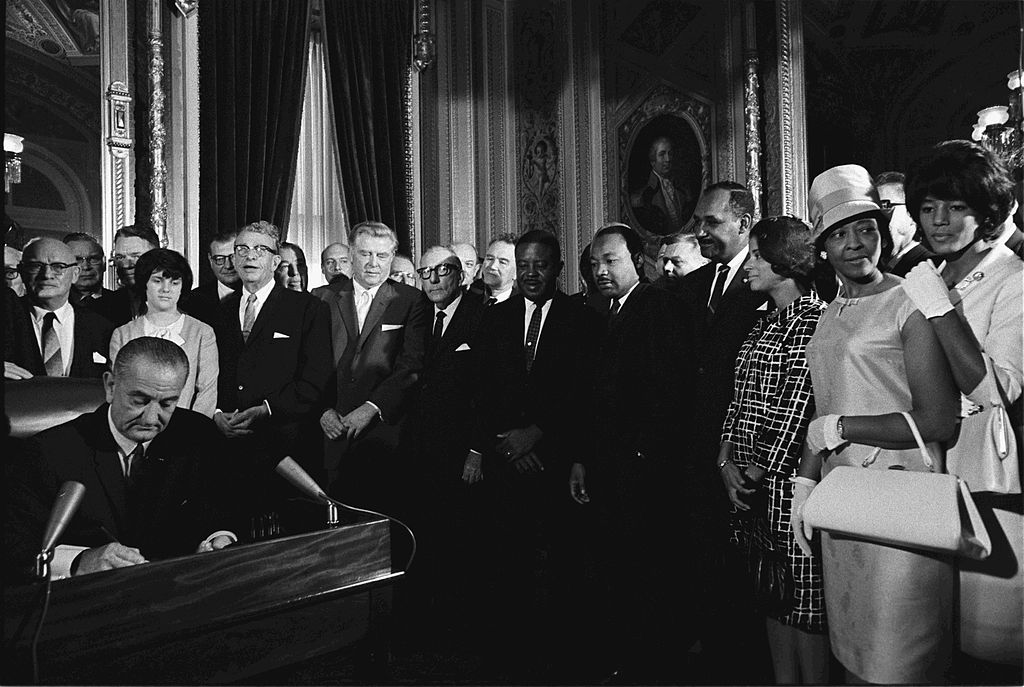
Nonviolent protests today: Why they fail
In March 2019, the Global School Strike for the Climate drew 1.4 million participants who skipped school and took to the streets to demand that politicians take action to tackle climate change. Follow-up events during the 2019 Global Week for Future attracted even more participants: 4 million on September 20, 2019, and 2 million on September 27, 2019, from over 150 countries.
Still, as if the number of protesters attending these events and the millions of images, social media postings, and their shares and reshares showing streets and boulevards crammed with protesters don’t matter, there are no decisive reactions from today’s leaders.
Applying Martin Luther King’s idea we realize that the protests do not “create a situation so crisis packed that it will inevitably open the door to negotiation.”
In our world saturated with images, pictures of peaceful, nonviolent protests do not create an outrage for the very reason that they are nonviolent. Whereas videos of the burning Amazon prompted the leaders of seven industrial countries to immediately pledge $20 million to help South American countries fight wildfires, the videos of peacefully marching protesters create no such effect.
Though, for example, German Chancellor Angela Merkel praised the Global School Strike for the Climate protests she also said that the students needed to be patient about Germany’s phase-out of coal-fired energy, which is scheduled for 2038.
That date is a generation away. Solutions exist but take time – especially if the political will is not there. To trigger political will is key to making nonviolent protests effective.
How to make nonviolent protest effective
In 2018, the nonprofit Climate Action Tracker (CAT) found that only two countries are living up to the Paris Climate Agreement: Morocco and The Gambia; India, Costa Rica, Ethiopia, Bhutan, and the Philippines are ranked as compatible.
This appears to be an eclectic list of countries until one wonders what these countries have in common – low car ownership. On the list of countries classified by vehicle per capita only Costa Rica (#70) makes the top-100, all others are way down the list: Morocco (111), Bhutan (129), the Philippines (138), India (157), Ethiopia (175) and The Gambia (179).
And it makes sense that the governments of countries with high car ownership have a harder time passing laws that protect the environment. The use of fossil fuels is at the core of almost all environmental problems; most cars are fueled with petroleum, and nearly all plastics are derived from fossil fuels.
I believe that this realization shows how an effective nonviolent protest has to be designed – we need to create a “crisis packed situation” that involves fossil fuels.
Create a crisis situation, all that’s needed is to stop idling your car for one single day!
The EPA’s (Environmental Protection Agency of the United States) website states that every gallon of gasoline burned creates about 8,887 grams of CO2.
But, to stage an effective nonviolent protest it is not even necessary that Americans rein in their driving. They only need to stop – idling. It is noteworthy that, in 2009, Mayor Bloomberg signed New York City’s anti-idling law, which limits idling in school zones to one minute and three minutes elsewhere in the city of New York.
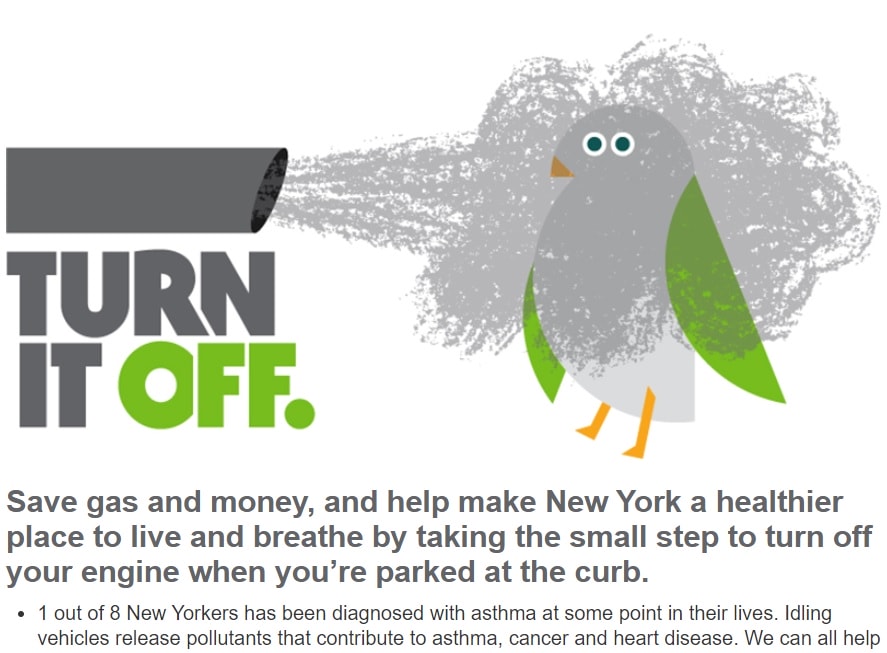
Idling compact cars burn around 0.16 – 0.3 gallons of gas per hour, and large sedans burn approximately 0.5 – 0.7 gallons of gas. Therefore, not idling a car that consumes an average of 0.4 gallons of gas per hour would keep 3,554 grams of CO2 (per hour) out of the Earth’s atmosphere.
Though this number might not look too impressive, it will when the effort is multiplied.
Currently, about 37.9 million children are enrolled in US primary education and 26.1 million in secondary education, which includes many middle/junior high schools. Surely, 5 million of them get picked up by a parent, in their car, every day. On average, parents wait 15 minutes in front of schools.
3,554 grams of CO2 x 0.25 hrs (15 minutes) x 5 million cars = 4,442,500,000 grams of CO2.
Conservatively estimated, in the US, another 50 million cars idle about 5 minutes at drive-throughs of fast-food restaurants, banks, pharmacies, dry-cleaners, and other businesses, which amount to 14,808,333,333 grams of CO2.
If Americans could commit to not idling their cars for one single day, approximately 20 trillion grams of CO2 (~19,250,833,333 ) would not enter the Earth’s atmosphere.
How to reduce idling: The example of drive-through businesses
Many US corporations use drive-throughs as a way to maximize their profits; not only do they reduce their payroll, they also avoid customers getting irate and asking why the business is understaffed. I tested this issue at fast-food restaurants. During off-times, when not even a single car was waiting in line, I followed individual cars through the drive-through and timed the process.
When the drivers placed their order, every time, the employee asked twice, “What else?” This resulted in the complete process from the moment the customer placed their order to receiving their order taking an average of three minutes and 2 seconds during which the car was idling.
By contrast, the same process took only an average of forty-two seconds when I placed my order for a single popular item accompanied by the words, “I only want xyz-item and nothing else.”
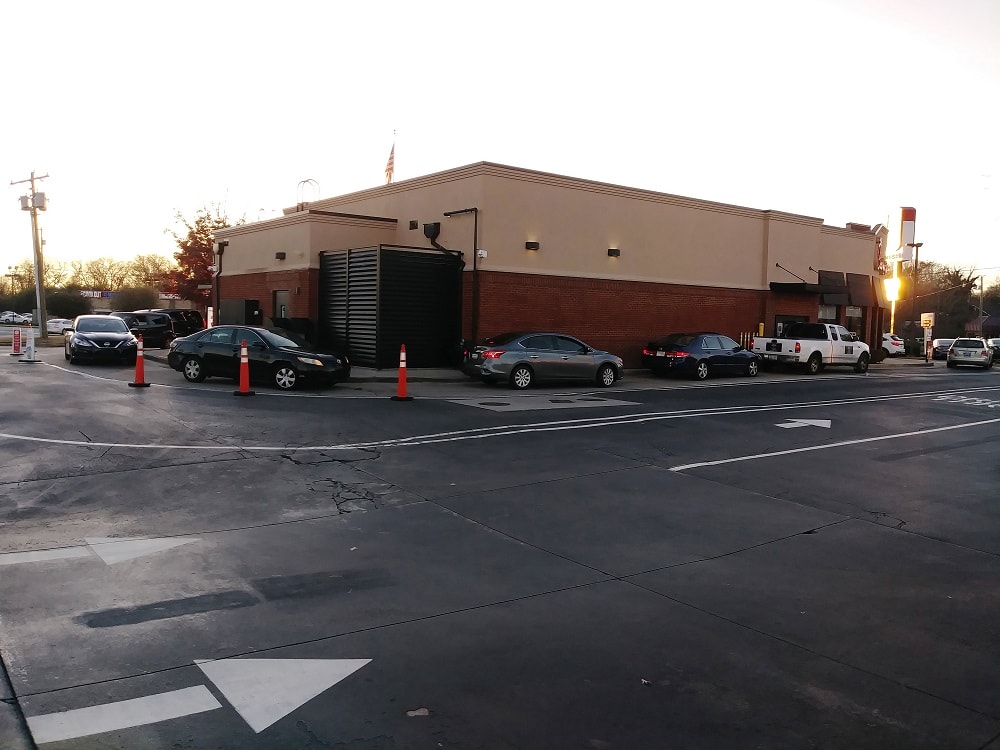
The business strategy becomes apparent when we compare it with that of businesses where employees have face-to-face contact with their customers, for example, movie theaters and amusement parks. Almost all of them post signs, “Please have your ticket ready when you approach the attendant.”
While both kinds of businesses rely on customers driving to their location, businesses that offer a drive-through try to drag out the human interaction to maximize profits though this results in higher levels of air pollution.
Make Non-Idling Day a wake-up call for the fossil fuel industry
Lastly, this kind of peaceful protest could also “hurt” the biggest contributors to our environmental crisis – the fossil fuel industry.
If, on one day, 50 million Americans would not idle their cars at fast-food restaurants, banks, and other businesses, they would save combined 1,666,666 gallons of fuel. 5 million parents not idling their cars in front of schools would save another 500,000 gallons. At an average price of $2.89 per gallon nationwide, not burning 2,166,666 gallons of fuel would cost the fossil fuel industry (and local gas stations) $6,261,664.74 in one single day.
That kind of loss will get corporations’ attention.
Maybe, at this point, the huge numbers I just mentioned made you forget the enormous sacrifice the Bishnois made to save their trees. Our small sacrifices of getting out of the car and walking inside a place of business could be the nonviolent protest the United States needs to prompt politicians and corporations to take the massive action it’ll take to save the planet.
Help make Earth Day 2020 a “No-Idling Day” in the United States.
Visit our Facebook page: click Earthday = No-Idling Day – Home
FEATURE IMAGE: Source: Healthy Schools Campaign February 2017


